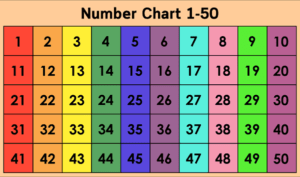Important Functions- “Important functions” can refer to various functions in different contexts, such as mathematics, programming, or general problem-solving. Here are some important functions in various domains:
- Mathematical Functions:
- Linear Function (y = mx + b): Describes a straight line and is fundamental in algebra.
- Quadratic Function (y = ax^2 + bx + c): Models parabolic shapes and is commonly used in physics and engineering.
- Exponential Function (y = a * e^(bx)): Models exponential growth or decay and is essential in fields like finance and biology.
- Trigonometric Functions (e.g., sin(x), cos(x), tan(x)): Describe relationships between angles and sides in triangles and are vital in trigonometry.
- Programming Functions:
- Main Function: The entry point of most programs in languages like C, C++, and Java.
- Built-in Functions: Standard functions provided by programming languages for common operations (e.g., print(), strlen(), sqrt()).
- User-Defined Functions: Functions created by programmers to modularize code and make it more readable and maintainable.
- Statistical Functions:
- Mean (Average): Calculates the central tendency of a dataset.
- Standard Deviation: Measures the spread or dispersion of data.
- Probability Density Function (PDF): Describes the likelihood of a random variable taking on a specific value in a probability distribution.
- Financial Functions:
- Compound Interest Function: Calculates the future value of an investment that earns interest over time.
- Present Value Function: Determines the current value of future cash flows, considering the time value of money.
- Amortization Function: Helps calculate loan payments over time.
- Engineering Functions:
- Transfer Function: Describes the relationship between the input and output of a system, often used in control theory.
- Fourier Transform: Converts a time-domain signal into its frequency components, used in signal processing and communication systems.
- Convolution Function: Used in image processing and filtering to blend two functions or signals.
- Data Science Functions:
- Regression Functions: Used to model the relationship between variables.
- Classification Functions: Categorize data into classes or groups.
- Clustering Functions: Group data points with similar characteristics.
- Database Functions:
- CRUD Functions (Create, Read, Update, Delete): Essential for interacting with databases and managing data.
- Aggregation Functions (e.g., SUM, AVG, COUNT): Used for summarizing and analyzing data in databases.
- Communication Functions:
- Encryption and Decryption Functions: Secure data transmission and storage.
- Compression Functions: Reduce the size of data for efficient transmission and storage.
- Human Biological Functions:
- Respiration: The process of inhaling and exhaling, essential for oxygen exchange in the body.
- Circulation: The heart’s function in pumping blood throughout the body.
- Digestion: The process of breaking down food for nutrient absorption.
These are just a few examples of important functions across various domains. The importance of a function depends on the specific field and the problem it addresses.
What is Important Functions
“Important functions” can be a general term used in various contexts to refer to functions or roles that are significant, essential, or crucial in a given situation or domain. The specific meaning of “important functions” can vary depending on the context. Here are some examples of how the term can be used in different contexts:
- Business and Organizations:
- Key Functions: These are the core activities or roles within a business or organization that are critical for its success. Examples might include sales, marketing, finance, and operations.
- Government and Governance:
- Government Functions: These are the tasks and responsibilities carried out by a government to provide essential services and maintain order, such as law enforcement, healthcare, education, and infrastructure development.
- Technology and Software:
- Critical Functions: These are the core components or features of software applications or systems that are vital for their proper operation and user satisfaction. For example, in an operating system, functions like memory management and process scheduling are critical.
- Medical and Healthcare:
- Vital Functions: In the context of human health, vital functions refer to physiological functions that are essential for life, such as breathing, heartbeat, and circulation.
- Ecology and Ecosystems:
- Ecosystem Functions: These are the roles and processes that different species play in an ecosystem, such as pollination, nutrient cycling, and decomposition, which are crucial for the ecosystem’s health and stability.
- Societal and Community Context:
- Social Functions: These are roles or activities within a community or society that contribute to its functioning and well-being, such as education, healthcare, public safety, and governance.
- Personal and Individual Context:
- Personal Functions: These are the individual actions and responsibilities that a person considers important for their well-being and success, such as maintaining physical health, managing finances, and nurturing relationships.
- Scientific and Research Context:
- Scientific Functions: In research, important functions can refer to key processes or activities necessary to conduct experiments and investigations effectively, such as data collection, analysis, and peer review.
The meaning of “important functions” is highly context-dependent and can vary widely. It typically refers to the core, essential, or significant roles, activities, or processes within a given domain or situation. The importance of these functions is determined by their contribution to achieving specific goals or maintaining the health and stability of a system or organization.
Who is Required Important Functions
The phrase “Who is Important Functions” is not grammatically correct, and it doesn’t form a coherent question or statement in English. It appears to be a combination of words that doesn’t convey a clear meaning.
If you have a specific question or if there’s a particular topic or concept you’d like to discuss related to “important functions,” please provide more context or rephrase your question, and I’ll be happy to provide information or assistance based on your clarification.
When is Required Important Functions

The phrase “When are important functions?” is still somewhat ambiguous and lacks context. The term “important functions” can apply to various fields and contexts, so I’ll provide a general response:
The timing of important functions depends on the specific context in which they are relevant. Here are a few examples:
- In Business and Organizations: Important functions can occur throughout the operational hours of a business or organization. They may include critical tasks related to production, customer service, and decision-making, among others.
- In Government and Governance: Essential functions of government, such as law enforcement, healthcare, and education, typically operate continuously, with specific working hours or schedules determined by the relevant agencies or departments.
- In Technology and Software: The timing of important functions in software or systems varies. Some functions are performed in real-time, while others may be scheduled or triggered by specific events or user interactions.
- In Human Biology: Vital functions, like breathing, circulation, and digestion, are continuous and operate 24/7 to sustain life.
- In Ecological and Environmental Systems: Ecosystem functions, such as photosynthesis and decomposition, occur continuously within their respective ecological contexts.
- In Societal and Community Context: Social functions, like education and public safety, often have specific schedules and operating hours that vary depending on the service or activity.
- In Personal and Individual Context: Personal functions, such as maintaining health or managing finances, are ongoing activities that individuals engage in as needed.
To provide a more specific answer, it would be necessary to know the context in which you are referring to “important functions.” The timing of these functions can vary widely based on the field and the particular functions in question.
Where is Required Important Functions
The location or “where” required important functions are carried out depends on the specific context in which these functions are relevant. The term “required important functions” is quite general, so the location can vary widely based on the field or domain. Here are a few examples:
- In Business and Organizations: Important functions in a business or organization are typically carried out within the company’s premises, offices, factories, or other facilities. The specific locations can include manufacturing plants, sales offices, customer service centers, and more.
- In Government and Governance: Important government functions are usually executed within government buildings, offices, and institutions. These may include city halls, police stations, healthcare facilities, and educational institutions.
- In Technology and Software: Important functions in software applications or systems can be executed on servers, data centers, or cloud computing platforms, depending on the technology infrastructure chosen by the organization or developer.
- In Human Biology: Vital functions in the human body, such as respiration, circulation, and digestion, occur within the various organs and systems of the body. For example, respiration takes place in the lungs, while digestion occurs in the digestive system.
- In Ecological and Environmental Systems: Ecosystem functions take place within specific ecosystems, such as forests, oceans, or wetlands. For example, photosynthesis occurs in the chlorophyll of plant leaves.
- In Societal and Community Context: Social functions like education, healthcare, and public safety have specific locations. Schools and universities are where education takes place, while healthcare functions are carried out in hospitals and clinics.
- In Personal and Individual Context: Personal functions, such as managing finances or maintaining health, are typically carried out wherever individuals are, such as in their homes, workplaces, or healthcare facilities.
The location of “required important functions” is determined by the nature of the function and the context in which it operates. To provide a more specific answer, it’s important to know the particular functions you’re referring to and the field or domain in which they are relevant.
How is Required Important Functions
The term “important functions” is quite general and can apply to various fields and contexts. The word “how” suggests that you are interested in understanding or evaluating these functions. Here are a few ways to consider “how important functions are” in different contexts:
- Assessment of Importance: You can assess the importance of functions by evaluating their impact on a system, organization, or process. Consider factors like their role in achieving goals, their criticality to operations, and their contribution to overall success.
- Relative Importance: Compare the importance of different functions within a specific context. For example, in a business, you might evaluate which functions are more critical to profitability, customer satisfaction, or growth.
- Measuring Importance: In some fields, importance can be quantified. For instance, in finance, you can measure the importance of investment portfolios using metrics like return on investment (ROI) and risk-adjusted returns.
- Risk Analysis: In some cases, functions are considered important because their failure or disruption can lead to significant risks. Understanding how functions mitigate or exacerbate risks is a way of assessing their importance.
- Stakeholder Perspective: Importance can vary from one stakeholder to another. Consider the perspective of different stakeholders, such as customers, employees, or shareholders, when evaluating the importance of functions.
- Long-Term vs. Short-Term Importance: Some functions may be crucial in the short term but less important in the long term. Assessing the temporal dimension of importance is important in strategic planning.
- Historical Significance: Examining the historical performance and impact of functions can provide insights into their importance over time.
- Resource Allocation: In various contexts, the allocation of resources (e.g., time, money, personnel) to specific functions can indicate their perceived importance.
The evaluation of important functions is highly context-dependent. It depends on the specific domain or problem you are addressing. The “how” of assessing importance can involve various methods, metrics, and criteria tailored to the context in which the functions operate.
Case Study on Important Functions
A case study on “Important Functions” can be approached from various contexts. Let’s consider a case study in the context of a manufacturing company. This case study will focus on identifying and evaluating the important functions within the company’s operations.
Title: Optimizing Operations Through Identifying and Prioritizing Important Functions
Introduction: ABC Manufacturing is a company that specializes in producing precision components for the aerospace industry. To ensure efficiency and profitability, it is crucial to identify and prioritize the important functions within the organization.
Objective: The primary objective of this case study is to identify and evaluate the important functions within ABC Manufacturing’s operations and prioritize them for optimal performance.
Methodology:
- Data Collection: Gather data through interviews, surveys, and document analysis to understand the company’s processes and functions.
- Identification of Functions: Categorize the various functions within the organization, including production, quality control, supply chain, human resources, finance, and more.
- Importance Assessment: Evaluate the importance of each function by considering factors like its impact on production, quality, customer satisfaction, and financial performance.
- Prioritization: Prioritize the functions based on their importance and their criticality in achieving the company’s strategic goals.
Case Study Findings:
- Production Function: The production function is identified as the most critical within ABC Manufacturing, as it directly impacts product quality and delivery schedules. Any disruption in the production process can result in delayed shipments and customer dissatisfaction.
- Quality Control Function: Quality control plays a significant role in maintaining the company’s reputation for precision manufacturing. It is crucial in ensuring products meet the required specifications and safety standards.
- Supply Chain Function: Efficient supply chain management is essential for timely acquisition of raw materials and components. Delays in the supply chain can lead to production bottlenecks and increased costs.
- Human Resources Function: HR functions, while important, are seen as less critical in terms of immediate impact. However, they play a significant role in long-term employee satisfaction and retention.
- Finance Function: The finance function is vital for managing budgets, controlling costs, and ensuring financial stability, but its impact is more indirect compared to production and quality control.
Recommendations:
- Prioritize investments in production technology and maintenance to reduce downtime and increase production efficiency.
- Enhance quality control processes to minimize defects and ensure products consistently meet quality standards.
- Strengthen supply chain relationships and explore options for dual-sourcing critical components to reduce supply chain risks.
- Focus on long-term HR strategies to attract and retain skilled employees and maintain a positive work culture.
- Continue financial prudence while providing necessary resources for the most critical functions.
Conclusion: Identifying and prioritizing important functions within ABC Manufacturing has enabled the company to allocate resources effectively and ensure optimal performance. By focusing on production, quality control, and supply chain, ABC Manufacturing can maintain its position as a reliable supplier to the aerospace industry while addressing HR and financial functions for long-term sustainability.
This case study demonstrates the importance of evaluating and prioritizing functions within an organization to optimize operations and achieve strategic objectives.
White paper on Important Functions
Understanding and Prioritizing Important Functions
Table of Contents
- Introduction
- Background and significance
- Purpose of the white paper
- Defining Important Functions
- Explanation of what constitutes “important functions” in various contexts
- Importance Across Different Domains
- Discussing the role of important functions in business, technology, healthcare, government, and more
- Identifying Important Functions
- Strategies and methods for recognizing critical functions within an organization or system
- Assessment and Evaluation
- Techniques for evaluating the importance of functions
- Factors to consider when assessing function importance
- Prioritization and Resource Allocation
- Exploring the process of prioritizing functions based on their importance
- Allocating resources effectively to support critical functions
- Case Studies
- Real-world examples highlighting the identification and prioritization of important functions in different contexts
- Challenges and Pitfalls
- Common obstacles in recognizing and prioritizing important functions
- Strategies for overcoming these challenges
- The Role of Technology and Data Analysis
- How technology and data-driven approaches can assist in identifying and optimizing important functions
- Best Practices
- Recommendations for businesses, organizations, and decision-makers on managing important functions
- Conclusion
- Recap of key points
- The importance of continuously monitoring and adapting to changes in important functions
- References
Executive Summary
In today’s complex and rapidly changing world, understanding and prioritizing important functions is crucial for organizations and decision-makers. This white paper explores the concept of important functions, their significance in different domains, strategies for identifying and assessing their importance, and methods for prioritization and resource allocation. Real-world case studies illustrate how recognizing and managing important functions can lead to improved efficiency, risk mitigation, and overall success.
Introduction
The introduction sets the stage for the white paper, explaining why the concept of “important functions” is relevant and significant. It outlines the purpose of the white paper and provides an overview of what readers can expect to learn.
Case Studies
Incorporate real-world case studies from various fields and industries to illustrate the practical application of identifying and prioritizing important functions. These case studies should showcase the positive outcomes of recognizing and addressing function importance.
Conclusion
Summarize the key takeaways from the white paper and stress the importance of ongoing assessment and adaptation in managing important functions. Conclude with a call to action, encouraging organizations and decision-makers to prioritize the identification and optimization of crucial functions.
References
Include a comprehensive list of references and citations used throughout the white paper to support the information and data presented.
This outline provides a framework for your white paper on important functions. You can expand each section with detailed information, examples, and analysis to create a thorough and informative document.
Industrial Application of Important Functions
The industrial application of important functions is vital for optimizing processes, ensuring efficiency, and achieving desired outcomes in various industrial sectors. Here are some examples of how important functions are applied in different industrial contexts:
- Manufacturing and Production:
- Quality Control: Implementing important quality control functions to ensure that products meet specified standards and minimize defects and waste.
- Production Planning: Utilizing critical functions to schedule production, manage inventory, and optimize production workflows.
- Maintenance and Reliability: Applying important maintenance functions to prevent breakdowns and ensure equipment operates at peak efficiency.
- Supply Chain and Logistics:
- Inventory Management: Employing vital functions to control inventory levels, reduce carrying costs, and avoid stockouts or overstock situations.
- Demand Forecasting: Using key functions to predict customer demand accurately and adjust procurement and distribution accordingly.
- Distribution Network Design: Implementing important functions to optimize the design of distribution networks for cost efficiency and customer service.
- Energy and Utilities:
- Power Generation: Utilizing essential functions to optimize energy generation processes, whether in fossil fuel power plants, renewable energy systems, or nuclear power facilities.
- Energy Distribution: Managing critical functions for the efficient transmission and distribution of electricity and other utilities.
- Plant Operations: Applying important functions to control and monitor industrial plants for optimal efficiency and safety.
- Aerospace and Automotive:
- Design and Engineering: Integrating critical functions for product design, testing, and engineering in industries with high precision and safety requirements.
- Quality Assurance: Implementing important quality control functions to ensure the safety and reliability of components and systems.
- Supply Chain Optimization: Using key functions to manage the supply chain for just-in-time manufacturing and cost efficiency.
- Chemical and Pharmaceutical Manufacturing:
- Process Control: Implementing important functions to monitor and control chemical processes for precise results and safety.
- Regulatory Compliance: Applying critical functions to meet strict regulatory requirements in pharmaceutical production and chemical processing.
- Safety Protocols: Utilizing key functions for safety interlocks, emergency shutdowns, and risk management.
- Food and Beverage Production:
- Food Safety: Employing essential functions to maintain hygiene, traceability, and quality control in food production.
- Supply Chain Tracking: Implementing important functions to ensure the transparency and integrity of the supply chain, especially for perishable goods.
- Packaging and Labeling: Using key functions for efficient packaging and accurate labeling of products.
- Construction and Engineering:
- Project Management: Utilizing critical functions to plan, execute, and monitor construction projects to ensure they meet budget and timeline expectations.
- Safety Protocols: Implementing important safety functions to protect workers and the public on construction sites.
- Material Procurement: Using key functions to manage the sourcing and delivery of construction materials and equipment.
- Oil and Gas Exploration and Production:
- Drilling and Well Management: Applying essential functions for optimizing drilling processes and maintaining well integrity.
- Environmental Monitoring: Utilizing important functions for monitoring and mitigating environmental impacts in exploration and production activities.
- Refining Processes: Implementing key functions to optimize the refining of crude oil into various products.
In each of these industrial sectors, identifying, prioritizing, and optimizing important functions is crucial for operational success, safety, cost-effectiveness, and product quality. Applying these functions appropriately can lead to improved processes, increased efficiency, and a competitive edge in the industry.





